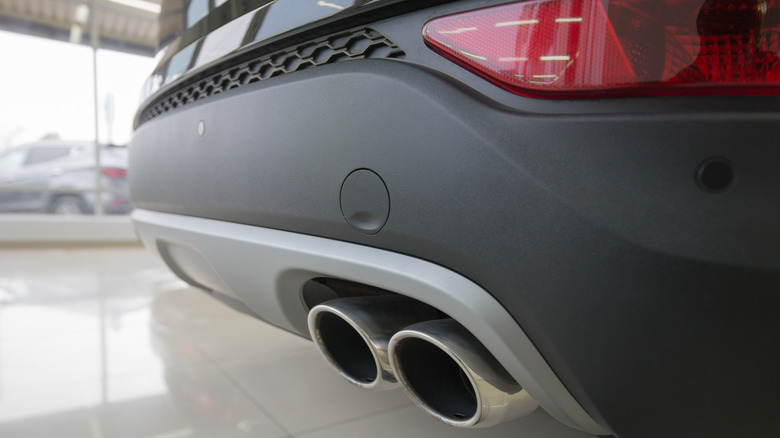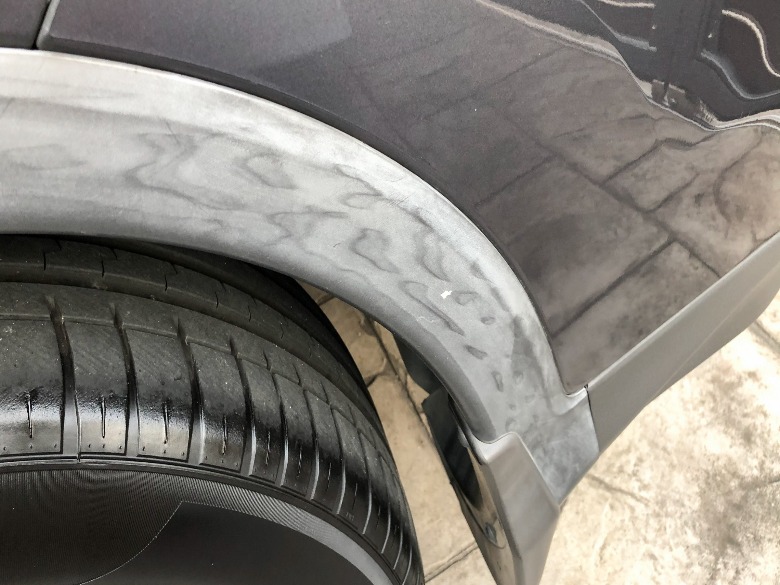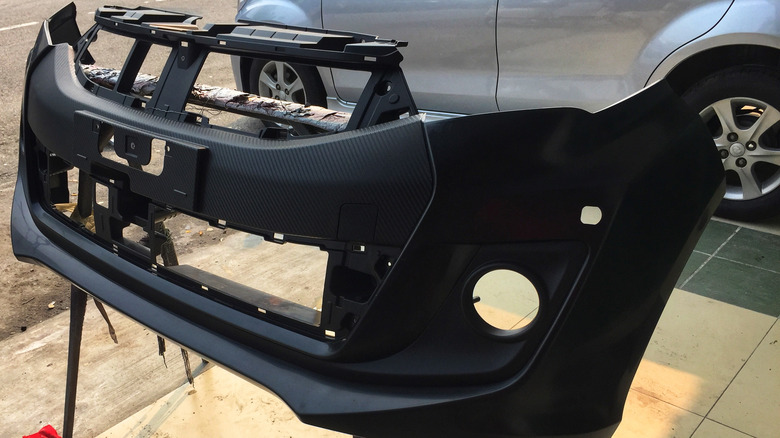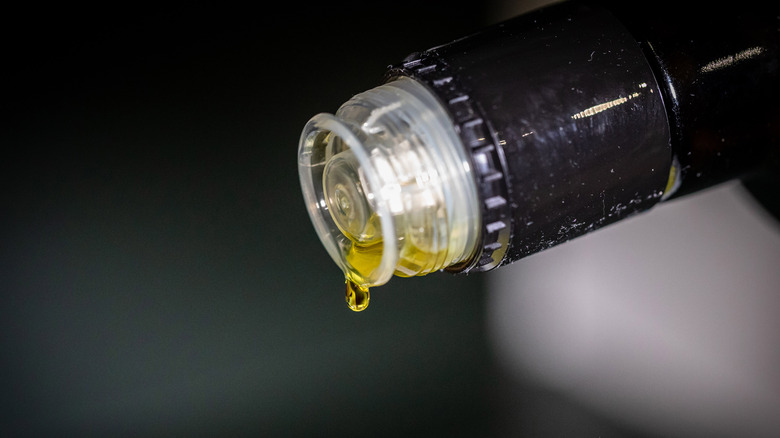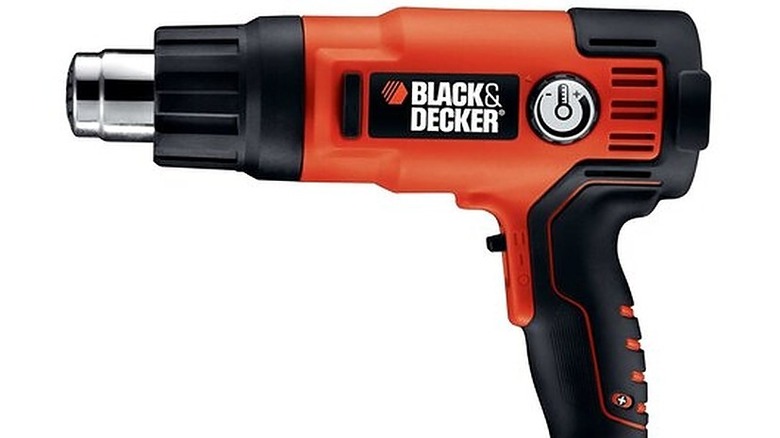The Best DIY Methods For Restoring The Plastic Trim On Your Car
We may receive a commission on purchases made from links.
Plastic was invented in 1862 by British inventor and chemist Alexander Parkes to address growing concerns about animal extinction, while Belgian chemist Leo Baekeland patented the world's first synthetic plastic in 1907, beating his Scottish rival James Winburne by a day, according to Science Museum. The first impact-absorbing pneumatic vehicle bumpers were patented by British industrialist and inventor Jonathan Simms in 1905. However, General Motors was the first to install plastic bumpers in an American-made car with the 1968 Pontiac GTO.
Plastic is everywhere in a modern car, and it's not hard to fathom why. Plastic is lighter than steel, is cheaper to make, easier to mold into shape, and is resistant to shock or impacts, making it perfect for vehicle components like headlights, bumpers, grilles, interior materials, and more. If not for plastic, modern cars would probably have boxier shapes, be heavier (which is bad for fuel economy and handling), and more expensive (bad for the wallet).
Plastic is a beautiful thing to behold, but it's not without drawbacks. Composite headlights, for starters, can lose their clarity and turn yellowish after years of sun exposure. In contrast, black plastic bumpers and exterior trim could turn gray, crack, fade, or deteriorate when exposed to harsh sun and unpredictable weather. The worst part is that faded plastic trim can make your vehicle look old or dated, and it only takes a fraction of neglect for early deterioration to start rearing its ugly head.
How to restore black plastic trim: the best DIY methods to try
The easiest way to restore faded plastic bumpers is to purchase a can or bottle of plastic trim restorer from your favorite auto parts shop or online store. Most are easy to apply and require almost zero elbow grease, although most are also pricey at about $15 to $40 per bottle. The typical instructions are to wash the plastic parts with soapy water, wipe dry, apply the product, and buff lightly. In most cases, repeated or periodic treatments are necessary to maintain that coveted like-new look.
If your plastic bumpers are severely weathered and have signs of folding, shrinking, large cracks, or deep scratches, it could be better to replace them altogether. But if you don't want to spend big money, there are DIY solutions worth trying, but it's essential to curb your expectations from the onset. The restoration methods listed below are great for mildly deteriorated surfaces. The steps would only take a few minutes, and most require only essential household items.
Restore black plastic trim using olive oil
We've used this tried-and-tested hack before, and it certainly works despite not having the longevity we expected. This method is excellent for almost-new surfaces or those with mild weathering or fading. The best part is the application is easy as pie.
- Clean the plastic trim with soapy water to remove surface grime, dust, and dirt. Rinse well with clean water and wipe dry with a microfiber towel before proceeding.
- Grab a bottle of olive oil from the kitchen cupboard (extra virgin olive oil is best) and apply a coin-sized amount of oil to a dry microfiber towel. You can also try using WD-40.
- Gently rub the oiled towel on the faded plastic using small, circular motions. If the cloth turns dirty, turn it over, apply more oil, and keep rubbing until the oil is covering all the faded areas. Don't hesitate to add more oil if necessary, but keep in mind that a little amount goes a long way. Allow the plastic trim to absorb the oil by letting it soak for five to 10 minutes.
- After letting the oil dwell on faded surfaces, grab a separate dry towel and buff the surface lightly using rapid circular motions. Turn the towel over, give it a final buff, and you're all set.
However, that shiny, black finish will fade after repeated washings or weather exposure, so make sure to re-apply oil at least weekly to keep those bumpers and trim looking new while getting much-needed protection from harsh UV rays.
How to restore black plastic trim using a heat gun
Car Throttle had a more straightforward yet more extreme approach to restoring black plastic trim, and they even shared a video by popular YouTuber Chris Fix on how to do it right. Heating the plastic draws out the oils within the material says Car Throttle, but it's easy for the plastic to warp when not careful. The only tool you need is a heat gun. Make sure to always start with a clean or freshly-washed surface to avoid burning contaminants into the plastic, and heat the surface one area at a time to prevent damage.
The heat gun method is not a solution you can do forever. As an added step, it's good to treat the surface with olive oil, WD-40, or a trim restoration product after heating to make the surface darker while offering some protection against sun and rain. Make it a habit to clean and re-treat black plastic exterior trim before the start of each season or at least once a month if you constantly park under the sun.
